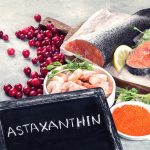Protect your skin from the inside out with nature’s most powerful antioxidant
 (NaturalHealth365) Anything that promises youthful vitality or a youthful appearance is big business. It seems that everyone is searching for the Fountain of Youth – and many claim to find it. While most of those claims are likely questionable, one substance, astaxanthin, has stood up to rigorous testing and shows a lot of promise in not just reducing the signs of skin aging but in helping skin attain a healthy vibrancy.
(NaturalHealth365) Anything that promises youthful vitality or a youthful appearance is big business. It seems that everyone is searching for the Fountain of Youth – and many claim to find it. While most of those claims are likely questionable, one substance, astaxanthin, has stood up to rigorous testing and shows a lot of promise in not just reducing the signs of skin aging but in helping skin attain a healthy vibrancy.
Astaxanthin offers MULTIPLE health benefits
Astaxanthin is a keto-carotenoid that has a distinctive red pigment. It has several applications, including food dye and health supplements. In nature, it provides the pigment for certain algae and is responsible for the salmon’s reddish-pink color.
It is also well known for its powerful antioxidant properties and has been found to be beneficial for the heart. In addition, studies found that astaxanthin increases blood flow, may reduce the risk of certain types of cancer, lowers oxidative stress in overweight people and smokers, and helps ease joint pain.
However, one of the most prevalent benefits of astaxanthin is what it does for the skin. It is credited with improving the texture and appearance of the skin, acting as an anti-aging agent, and giving skin a more youthful appearance.
Studies show astaxanthin’s antioxidant and anti-inflammatory properties may be responsible for skin-protective effects
The effects of astaxanthin on the skin are impressive. Studies show that it may delay the skin’s signs of aging and improve the appearance and texture of the skin. In addition, it can increase skin elasticity and enhance its moisture content. At the same time, it reduces fine lines and wrinkles and reduces the production of sebum oil. This is due to its high anti-inflammatory and antioxidant effects.
The integrity of the skin barrier is also greatly improved so that skin is not only more youthful, glowing, and clear, it is healthier too.
Mounting evidence confirms astaxanthin’s ability to slow aging, improve skin layers
A number of studies have been conducted to explore the benefits of astaxanthin. One report reviewed several studies and then analyzed all the data to determine the claims’ validity. They found that astaxanthin is very effective in helping improve skin conditions and improve the skin’s surface and the lower layers.
Several studies seemed to have better results with supplements than a topical application. Still, at least one study had great success with the tandem use of both topical and oral supplements. But supplements and creams are not the only way to get astaxanthin. Some people prefer to consume it from food sources.
How to incorporate astaxanthin into your healthy skin regimen?
Astaxanthin is available as an oral supplement as well as a topical cream. While both of these methods have had success in studies (with oral supplements testing slightly better), the best way to get most of your nutrients is through your food.
Salmon is by far the best source of astaxanthin, specifically sockeye salmon, which contains up to 38 mg of astaxanthin, while Atlantic salmon only has around 8 mg. This is followed by lobster, crab, red sea bream, red trout, shrimp, salmon roe, and crawfish.
Studies show that you get the actual benefits of astaxanthin by consuming about 3.6 mg a day. That’s easy to do. Eating six ounces of wild sockeye salmon will give you that much and set you on the track to healthier, younger-looking skin – and a healthier body to boot.
Sources for this article include:



